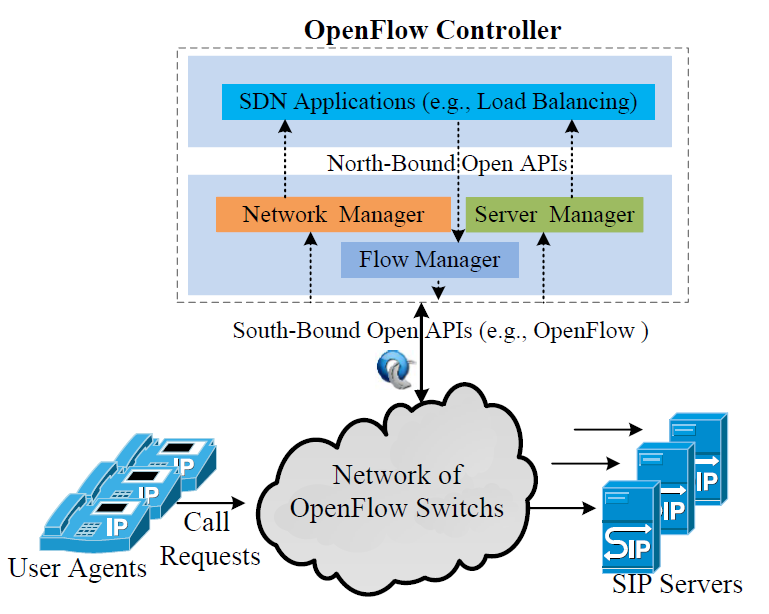
Session Initiation Protocol (SIP) grows for VoIP applications, and faces challenges including security and overload. On the other hand, the new concept of Software-defined Networking (SDN) has made great changes in the networked world. SDN is the idea of separating the control plane from the network infrastructure that can bring several benefits. We used this idea to provide a new architecture for SIP networks. Moreover, for the load distribution challenge in these networks, a framework based on SDN was offered, in which the load balancing and network management can be easily done by a central controller considering the network status. Unlike the traditional methods, in this framework, there is no need to change the infrastructures like SIP servers or SIP load balancer to implement the distribution method. Also, several types of load distribution algorithms can be performed as software in the controller. We were able to achieve the desired results by simulating the three methods based on the proposed framework in Mininet.